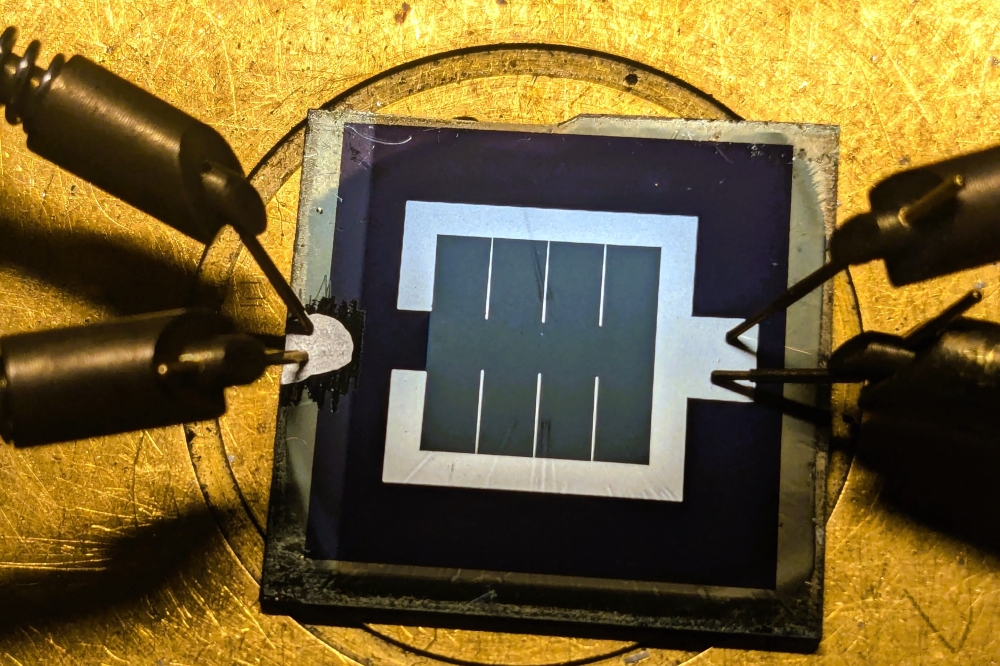Technical Insight
An insight into silicon PAs

A concise, multi-author treatise discusses issues relating to the efficiency, linearity and manufacturability of silicon power amplifiers
BY RICHARD STEVENSON
It is said that forewarned is forearmed. So on that basis, if you are a GaAs PA designer, it is worth your while to be aware of the capabilities of rival products based on silicon, given the interest that they are generating through the efforts of Peregrine and Qualcomm.
For engineers in that position, based on the title alone, it would be tempting to place an order for Linearization and Efficiency Enhancement Techniques for Silicon Power Amplifiers. This accessible book that has just been released retails for a price that is far from extortionate, and consists of six informative chapters covering important topics. But it may not meet the needs of every GaAs PA engineer.
Why? Well, each of the chapters is authored or co-authored by an expert "“ and while this approach ensures great coverage of several topics, the authors tend to write about their successes in a narrow field, resulting is a book that is far from comprehensive.
Illustrating this point is the coverage given to techniques for improving the linearity of silicon PAs so that they are not dramatically inferior to those based on GaAs. In this chapter, several methods are listed for increasing linearity, including envelope elimination and restoration, linear amplification with non-linear components, and the application of a constant amplitude locked loop universal modulator. However, only one approach is discussed in detail: Cartesian feedback with digital enhancement.
In this section of the book, as well as describing the increase in linearity, consideration is given to the increases in power consumption and total chip footprint that arise from the introduction of Cartesian feedback with digital enhancement. The feedback path consumes just over 20 percent of the total power, while the digital part takes up only 1 percent of the total area.
Efficiency verses linearity
A chapter that may help any RF engineer to look at the world in a different light is that entitled Transmitter Linearity and Energy Efficiency. It begins by asserting that those in marketing want the linearity of the amplifier and its efficiency to both be the "˜first priority' "“ an impossible task, since physics dictates that gains in one area must come at the expense of deterioration in the other.
The radical solution offered to the reader is that instead of starting with a linear circuit and making it more efficient, one should start with a circuit exceling in energy efficiency, and try to make it more linear.
Linearization and Efficiency Enhancement Techniques for Silicon Power Amplifiers has just come out in press. It is published by Academic Press and retails for £42.99.
This approach is applied to the construction of an amplifier that is capable of serving different data transmission technologies. One of the most demanding of these is WCDMA, which has output power requirements down to -50 dBm. Such low powers are not accessible when operating the amplifier in compression-mode, which allows for high efficiency, but cannot reach such low powers.
The solution is to supplement this mode of operation with p-mode, a configuration where the output power depends on both the input power and the power supply.
In addition to excellent linearity, these compression-mode transmitters feature several inherent stabilities that are important for fast design, consistent manufacture and long-term performance.
Great performance is of little practical value, however, unless it goes hand-in-hand with reliability. This is discussed in another chapter, where the point is made that using nanometre CMOS technologies for PA design brings major challenges, some of which have not been encountered before. These include thermal effects, metal interconnect electromigration, time-dependent dielectric breakdown, hot carrier injection and electrostatic discharge.
Towards the terahertz
Although most chapters in the book consider amplification at frequencies associated with mobile communication, two look at devices operating at higher frequencies.
For frequencies of tens of gigahertz, the efficiency of power amplifiers in transmitter systems with a high peak-to-average power ratio can be quite low. To increase efficiency, engineers may turn to a Doherty amplifier. This was introduced in 1936 by the American electrical engineer William Doherty, and it combines a main amplifier, working in either class AB or class B mode, with a peaking amplifier. The latter operates in class C mode, and only makes a contribution at high input powers.
To date, there are only a couple of reports of Doherty amplifiers fabricated with silicon technologies. In 2008, the first millimetre-wave Doherty amplifier implemented in 130 nm CMOS technology was announced, which operated with an efficiency of 3 percent at 60 GHz; while in 2014 a report emerged of a Doherty amplifier formed with 45 nm silicon-on-insulator CMOS technology operating at 21 percent efficiency.
Even higher frequencies are covered in the final chapter of the book, which considers amplification in the terahertz domain. In this arena, silicon devices are severely limited by their cut-off frequency and breakdown voltages, but the use of multiplier chains and a 0.13 µm SiGe HBT process has enabled output powers of -3 dBm at 325 GHz and "“ 29 dBm at 825 GHz. However, this approach has drawbacks, such as very high DC power consumption and very low chip surface efficiency, so there is a preference for fundamental frequency oscillators.
The proliferation of mobile devices is driving the development of silicon power amplifiers, which require techniques to improve efficiency and linearization in order to compete the incumbent GaAs devices.
The good news for the developers of silicon amplifiers is that the transistors are improving. Maximum oscillation frequencies are now reaching 500 GHz, while a target of 700 GHz is being pursued in the EU-funded DOTSEVEN project that will finish in 2016. This is helping to improve the results obtained with CMOS technologies. One highlight is a 65 nm technology used to form a three-stage amplifier that delivers an output power of up to 6.3 dBm at 150 GHz.
In this last chapter, III-V technologies are discussed "“ and arguably, it would be absurd not to mention them, given their far higher oscillation frequencies, plus their ability to form amplifiers delivering gain at frequencies that silicon-based technologies cannot yet reach. This is a rare mention of the compounds, however, so if you are looking for a detailed comparison of silicon and III-V technologies, you must search elsewhere. But if you want an insight into several ways to improve the capability of silicon RF amplifiers, this could be the book for you.


































